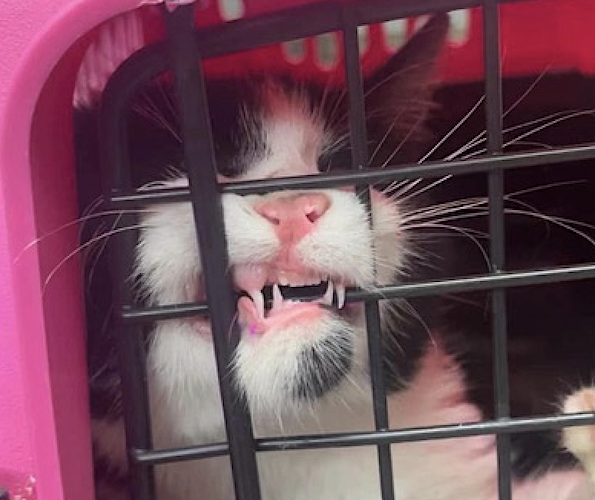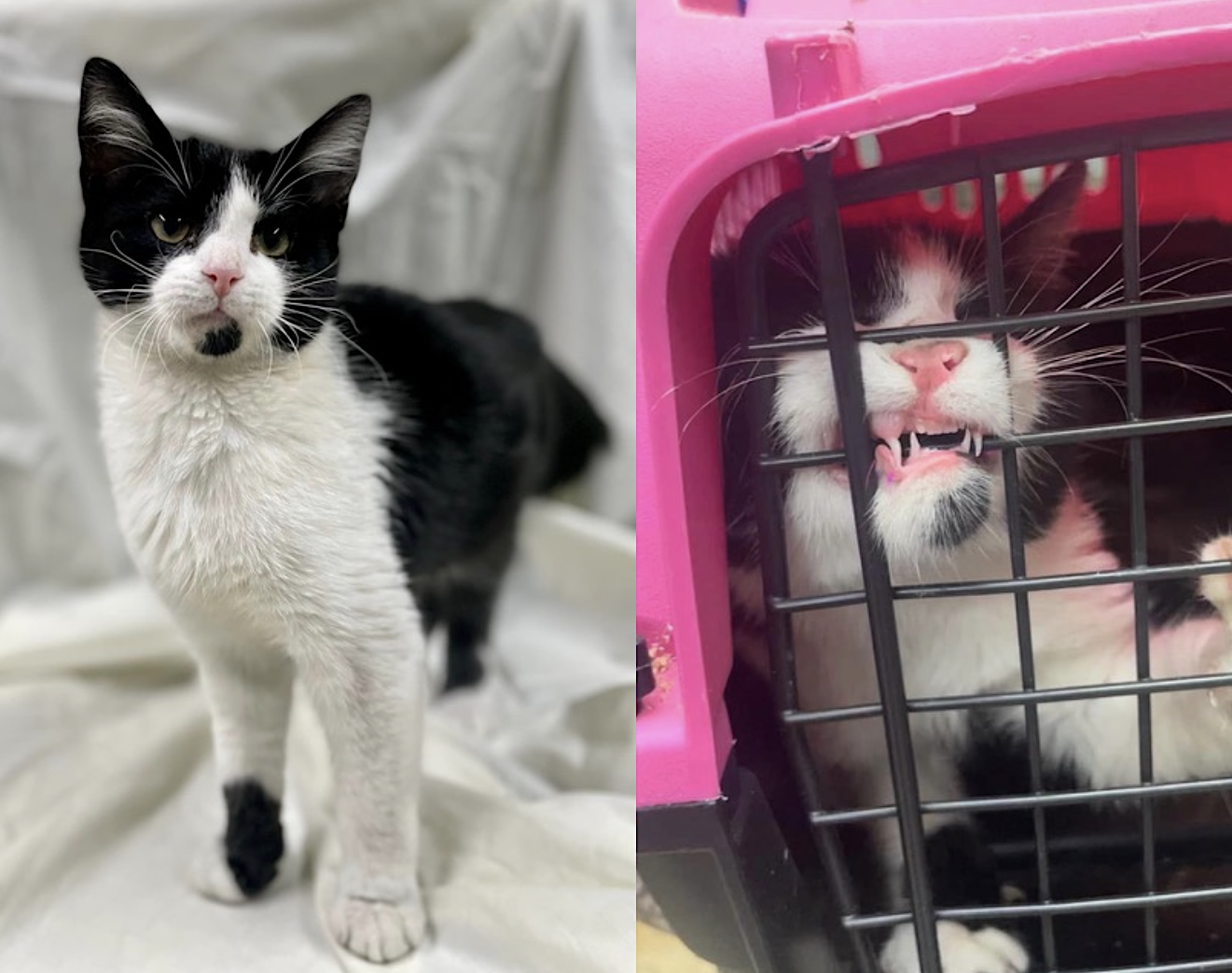
Two staffers at the Habersham County Animal Shelter are undergoing treatment for possible exposure to rabies after a kitten at the shelter tested positive for the virus.
The stray kitten was brought to the shelter on December 20 by someone who said they found it in a barn on L Ansley Road off BC Grant Road in the unincorporated area of Cornelia. The kitten had a leg injury and had been kept in isolation since its arrival at the shelter.
“Upon arrival, the male kitten was placed into the shelter’s medical hold room and began treatment for his injuries. The kitten was improving physically and was a playful, friendly kitten,” says Habersham County Animal Care and Control (HCACC) Director Madi Nix.
But that soon changed.
On Tuesday, January 3, an animal care technician reported during daily rounds that the kitten seemed “off” and was acting strangely. The kitten appeared to be struggling with the injured leg. The kitten also appeared to have a decreased appetite.
By Wednesday morning, the on-duty animal care technician noticed the kitten was struggling to walk and was “jumping” at the cage door. She reported the behavioral change to Nix, who evaluated the animal.
According to Nix, the kitten appeared to be entering the “furious stage” of rabies and was aggressively attacking any objects presented to him. In addition, the kitten was displaying signs of paralysis, vocalizing loudly, had dilated pupils and hydrophobia.

Nix says the kitten was humanely euthanized and sent to the health department for rabies testing. The tests came back positive Friday afternoon, marking the first confirmed case of rabies in Habersham County this year.
Even before the test results were returned, HCACC acted to get medical help for the two animal care technicians who’d been exposed to the rabid kitten.
“It is not uncommon for staff to be bitten, scratched, or come into contact with the bodily fluids of sick and diseased animals. With the clinical signs being displayed, we made the decision to have both staff members taken immediately to the Habersham County hospital for post-exposure treatment,” says Nix.
Post-exposure treatment involves a series of shots to protect against the potentially deadly virus.
Because the kitten had been kept in isolation, Nix says no visitors to the shelter were exposed.
The shelter notified the person who found the kitten that it had rabies. While no exposure was reported, and the animal was not showing clinical signs when it was dropped off at the shelter (indicating that, at that time, it was not contagious) animal control officials urge residents to be vigilant when dealing with stray animals and wildlife. They also encourage residents to take steps to protect themselves and their pets against rabies.
“We cannot stress enough that a current rabies vaccination can literally save your pet’s life,” says Nix.
In addition to vaccines, there are other things residents can do to guard against rabies:
- Avoid wildlife and animals you do not know.
- Do not allow your pet to roam – it can come in contact with rabid wildlife.
- Never feed or touch wild animals, especially bats, skunks, raccoons, or foxes.
- Seek medical attention immediately if bitten or exposed to the saliva of a wild animal.
- Contact your veterinarian if your pet was exposed to a bat, raccoon, skunk, or other wild carnivores.
- Do not encourage the feeding of unmanaged cat colonies. If you do feed cats, ensure they are part of a Trap-Neuter-Return (TNR) colony and have been vaccinated for rabies.
State law and local ordinance require all cats and dogs that are three months of age or older to be vaccinated against rabies. Local animal control officers enforce vaccination violations to protect the human and pet populations.
Know the symptoms
The time between a bite and when rabies symptoms appear is called the incubation period. It may last for weeks or months. According to the Centers for Disease Control and Prevention, a bite by an animal during the incubation period does not carry a risk of rabies because the virus has not yet made it to the saliva.
Early symptoms of rabies may be gradual and hard to spot. During the first 2-4 days of infection, cats may have a fever, less energy than usual, and decreased appetite.
Symptoms tend to progress quickly to weakness or paralysis of the legs, seizures, difficulty breathing, hypersalivation (too much saliva) due to difficulty swallowing, and abnormal behavior. Changes in behavior can range from extreme aggression to extreme depression or coma.
If you’ve been in contact with any wildlife or unfamiliar animals, particularly if you’ve been bitten or scratched, wash any wounds immediately with soap and water, then consult a healthcare provider to determine your risk for rabies or other illnesses.






